We live in a busy world and often, you may go to bed late at night after a tiresome working day and a pleasant hot shower…with your hair still wet. Is it bad? Well, basically it is not.
However, many people are still concerned about sleeping with wet hair, and in particular, the most frequently asked question is “Can you put wet hair in a bonnet?”.
In this article, we decided to make it clear once and for all for you. You are going to find out whether it is ok to put a silk bonnet on your wet hair before going to bed, and whether a satin bonnet is good for straight hair.
In addition, we will explain how to wear a bonnet correctly. And of course, expect a lot of other useful information on the subject of hair bonnets!
Can You Put Wet Hair In a Silk Bonnet?
We often get so busy during the day that, when we come back home in the evening, we only have time to grab some food, take a shower, and go to bed! And of course, if your hair has become dirty during the day, you might want to wash it before you go to sleep. But is it a good idea? And how safe it is for your mane if you sleep with your hair damp?
https://youtu.be/LPmk-FFy4oM
Well, going to bed with wet hair isn’t always the best thing for your hair, especially if you leave it uncovered while sleeping. And this is why:
- Wet hair, just like wet clothing, is way more susceptible to bacteria and infection
- It is also more susceptible to breakage at the night, especially if you sleep with your wet hair in a ponytail
- Your pillowcase can rub against your hair and lead to breakage, split ends, and other damage
Now, most of you might become worried for sure. Does it mean that I have to skip my night showers to keep my hair safe and healthy, you may wonder?
No, you will not have to sacrifice your night shower routine, don’t worry! If those night showers are the highlight of your day, you don’t have to skip them.
Instead, you can use a bonnet to cover your wet hair before you go to bed. This is an excellent and very easy way to protect your mane while you sleep. See, a bonnet will be able to keep your hair safe from any breakage, infection, bacteria, and even from being cold!
However, when using a bonnet, it is important that you follow several simple rules. They will allow you to avoid any accidental damage to your strands that could be caused by the improper use of the item.
- Don’t put soaking wet hair in your bonnet
- Dry your hair off with a microfiber towel and let it air dry. When it’s damp, put on a bonnet
At this point, your hair should be damp when you put it in a bonnet. Damp hair is much better for a bonnet than soaking wet mane! Besides, this will also likely be more comfortable to sleep with.

How to Put Your Hair In a Bonnet?
Putting on a bonnet can be the last step right before you get into your bed for the night. You can even put your bonnet on with wet hair to preserve the benefits of your recent wash and keep it from drying out during the night!
Below, you can read about the correct way of putting on a bonnet. What could be so difficult about it, you may wonder?
Well, even though putting a bonnet on seems simple, there are certain nuances that you should be aware of, otherwise, you might cause damage to your locks. So this is how to put on bonnets.
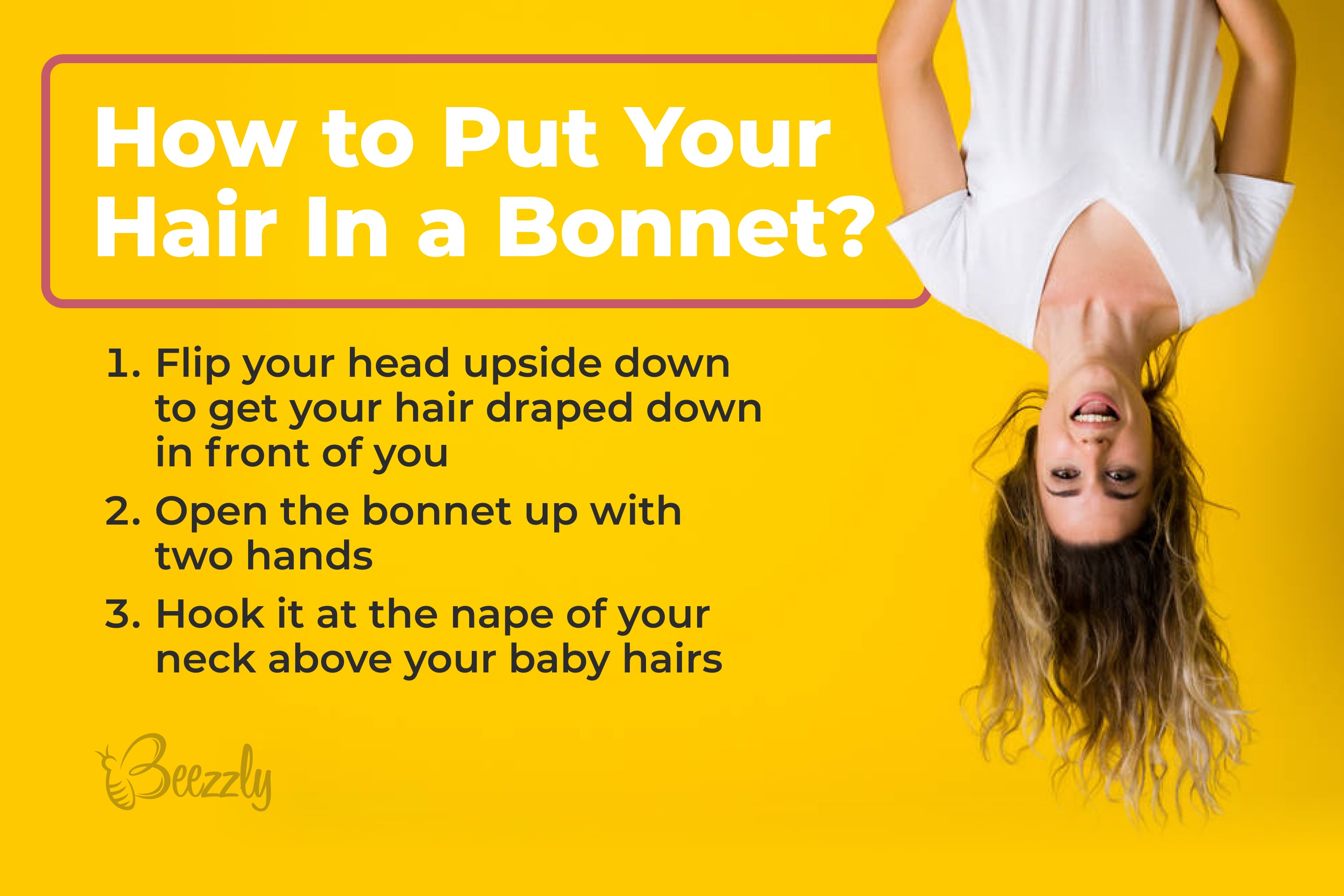
- Flip your head upside down to get your hair draped down in front of you
- Open the bonnet up with two hands
- Hook it at the nape of your neck above your baby hairs
- Pull the bonnet down over the length of your hair
- Press the ends of your hair up toward your scalp to more easily capture them in the bonnet
- Make sure the bonnet is tight and secure on your head
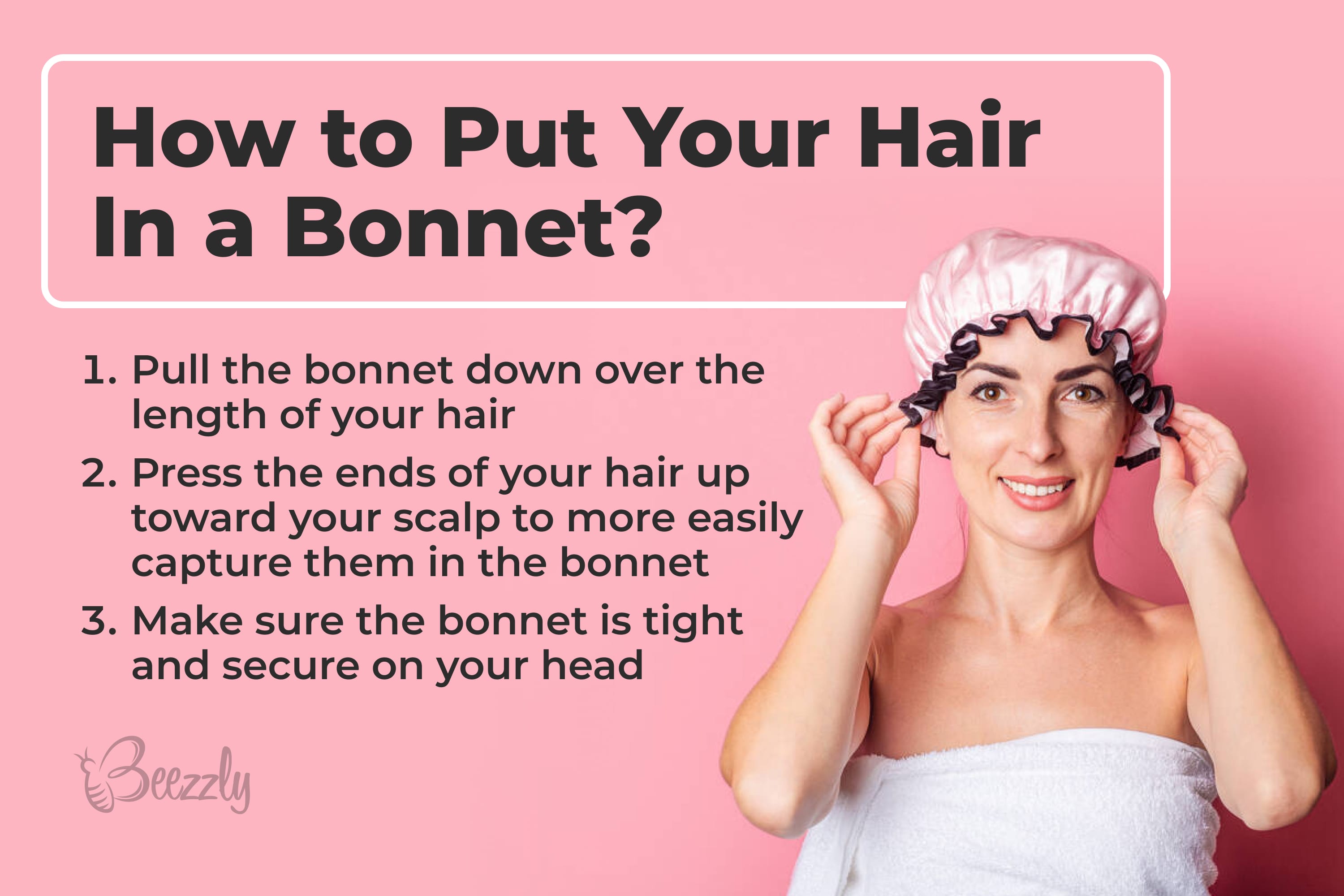
And since there are different types of bonnets out there, you can choose the one that suits you most. For example, you may find a bonnet with an elastic hairband a great option for you since it naturally grips the head and stays in place.
You can also find bonnets that tie in place. But no matter your favorite material or style, you should always make sure the bonnet isn’t too loose or tight on your head!
If your bonnet is way too loose, you won’t be able to experience all the benefits it can offer if it slips off during the night. And if it is way too tight on the head, you are more likely to experience headaches, irritation, and even hair loss!
And one more thing for you to keep in mind. When choosing a bonnet, consider the material it is made of. Silk or satin bonnets are best to use with pillowcases of a similar material to protect your hair better. Plus, these materials are more beneficial and delicate to your hair.
So, now you know that wearing a bonnet on wet hair is not only forbidden but also recommended, of course, if you wear it correctly. Now let’s dive deeper into the bonnet world and find out what types of bonnets are considered more beneficial and why.
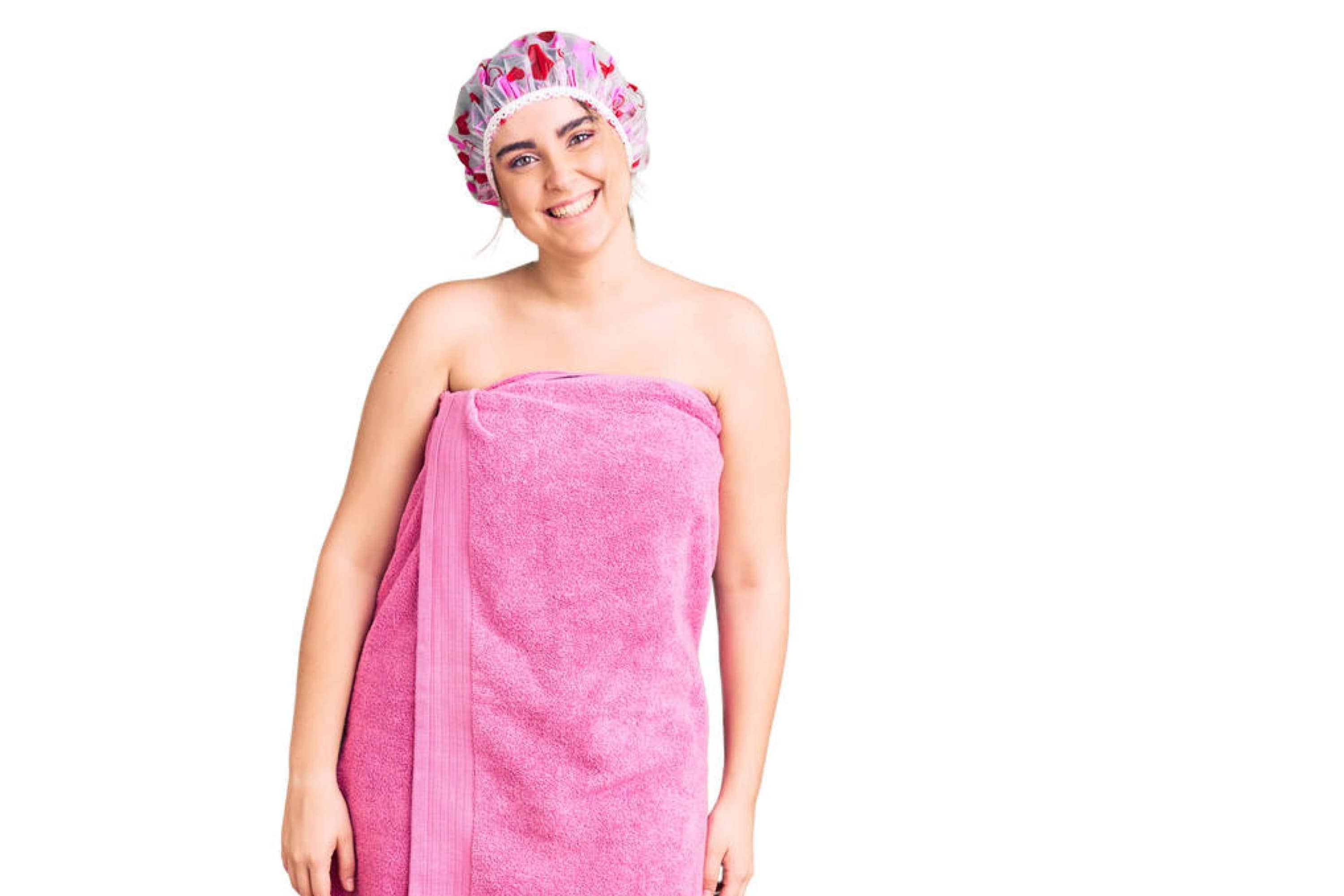
What Kind of Bonnet Should I Use for Wet Hair?
Now you know that you can put wet hair in a bonnet while sleeping. However, it’s best to make sure your hair isn’t dripping wet. For keeping your mane safe, aim for slight dampness.
But now you might have another question: what kind of bonnet is best for wet hair? And what about a silk bonnet? How good is it? Ok, let’s find out.
Can I Put Wet Hair in a Satin Bonnet?
The answer is yes! Satin has plenty of benefits, for example, it helps prevent breakage, as well as keeps your hair soft and smooth. As a result, you will not end up with textured hair, dry hair, and/or thinning strands. But this is not the only benefit that a satin bonnet can give you.
Satin bonnets can also help keep your hair moisturized through the night. See, when you use a lot of heat to dry your hair (e.g. when using a blow dryer), your mane will most likely dry out fast.
This is why choosing to let it dry in a bonnet through the night will help your hair retain even more moisture and stay hydrated longer.
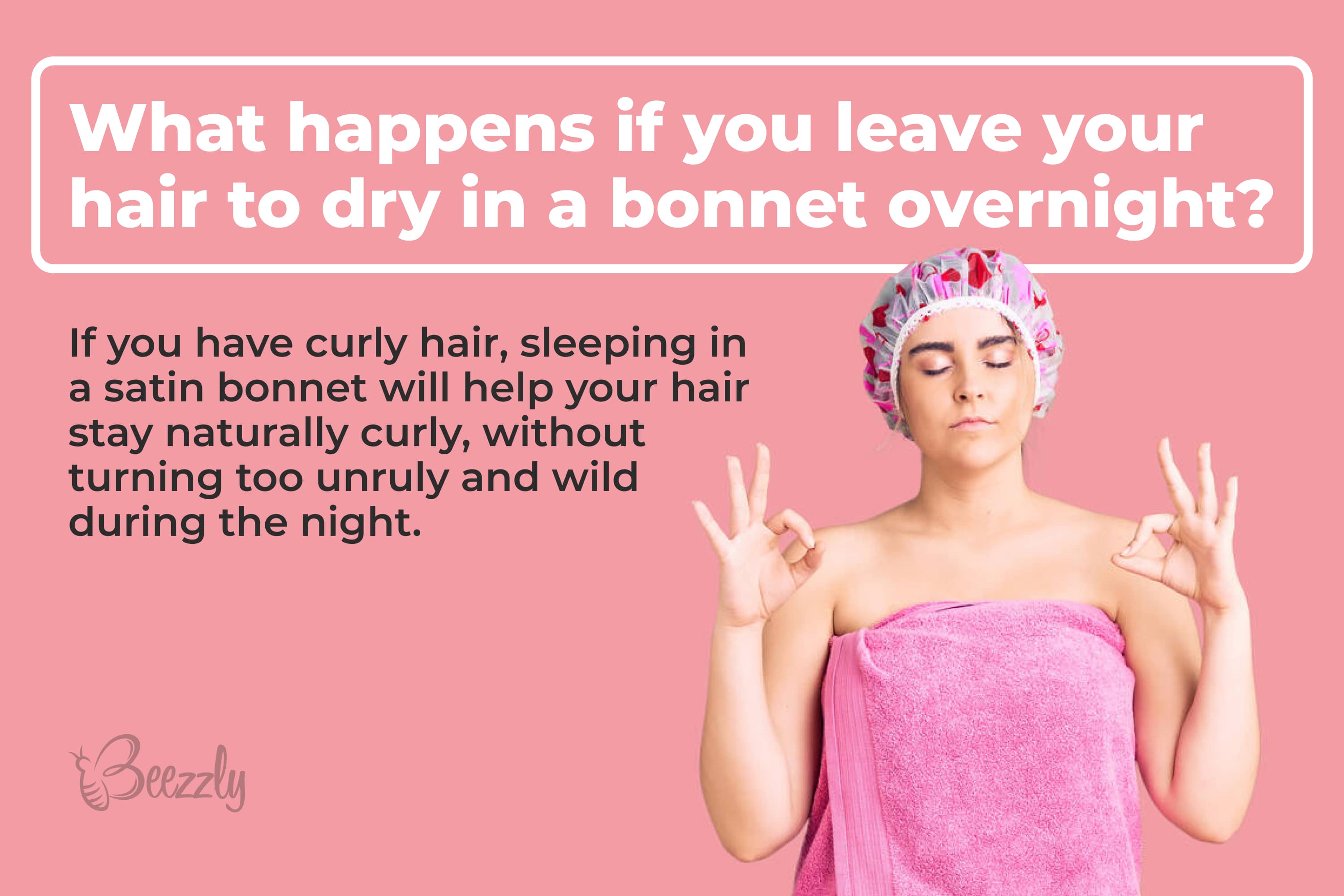
If you have curly hair, sleeping in a satin bonnet will help your hair stay naturally curly, without turning too unruly and wild during the night.
The last benefit of a satin bonnet is that it will help prevent breakouts. See, even if your pillowcase is clean, your hair can get dirty when you sleep on it! All because of the skin oil and dirt that accumulates. As a result, it may lead to all sorts of unpleasant skin conditions. Using a bonnet at night is one of the best ways to keep your pillowcase free of dirt, and thus your skin too!

Can I Put Wet Hair in a Silk Bonnet?
While sating bonnets come with a range of benefits, using a silk bonnet has the same! Silk is incredibly soft and it keeps your hair smooth, negating the effects of frizz on hair. Your hair becomes more manageable and less prone to all sorts of damage, such as breakage, split ends, etc.
Can I Wear Bonnets On Straight Hair?
Most people have used to the thought that bonnets are most common with curly hair since it’s an excellent way to preserve bounce, minimize frizz, and keep your pillows clean.
However, you can use a bonnet if you have straight hair too! It will have the same benefits, and you will be able to enjoy a bonnet no matter what type of hair you have.

What Do Bonnets Do For Your Hair?
We guess that by now, you already have an idea of some benefits that wearing a bonnet has for your hair. However, we would like to tell you more about it in case you are still hesitating about whether you should wear a bonnet during the night.

- Bonnets provide protection from the elements and the rough material of your regular pillowcase
- A bonnet will protect the delicate hair cuticle from being constantly rubbed while you’re sleeping, thus preventing breakage and dryness
- Bonnets also minimize breakage and maximize moisture retention, keeping your hair healthy and strong
- When you use a bonnet, your hair moisturizers and oils will stay in your hair longer rather than being absorbed by your pillowcase
A bonnet minimizes friction, keeping your hair from breaking out into split ends that stunt overall growth - You will be able to grow your hair faster by protecting it with a bonnet while you’re sleeping

So if you haven’t bought a bonnet, now is the right time to make a choice! This simple and affordable item doesn’t take much place in your drawer and it doesn’t cost much, nevertheless, it will give you a lot of benefits.

Are Bonnets Good For Curls?
Curly hair often requires more care and products than straight or flat hair. The owners of curly manes often report that their curls may only be manageable when they’re wet or just out of the shower.

This is why, if you have curly or natural hair, bonnets can prolong the time between washes and stop your curls from being flattened during the night.
Soft and protective bonnets help your curls grow faster and stronger. Your curls won’t frizz out or lose their natural definition due to the natural friction of sleeping as well. As a result, your hair will feel healthier, more elastic, and bouncier after using a bonnet!

How to Sleep With Your Hair Wet Correctly?
Of course, using a bonnet can give you many benefits in terms of hair care and protection during sleep. However, you may start wondering: “Is it the only way to keep my strands healthy and safe while I’m sleeping with wet hair?”.
If you assume that bonnet is not the only solution, you are right. There are a few alternative methods you can use in order to sleep with your hair wet and don’t be afraid of damaging it.

Opt For a Protective Serum
Protective serums can help keep your hair soft, protect it from breakage, and keep your skin clean while you sleep. But you should choose your serum carefully! Some serums are designed for curly hair, others are supposed to be used for straight hair only, and there are also serums for all hair types.
Sleep With Your Hair Braided
If you don’t have any protective serums, don’t want to wear a bonnet, and can’t dry your hair before you go to bed, there is no reason for panic. Simply keep your hair up in a loose braid, twist, or very loose ponytail.
Also, you might want to use soft scrunchies since they are gentler on hair in comparison to a regular elastic hair tie. Sleeping with your hair up will prevent too much breakage, split ends, and roughness. It can also prevent breakouts as less of your hair will touch the pillow when your hair is up.
Like this, now you know that it is absolutely safe to sleep with wet hair if you make sure that you get it ready for the night correctly. That means using a bonnet since it is the most beneficial option.
However, you can also make use of a soft scrunchie to make a loose ponytail or simply make a braid. Just make sure your mane is not dripping wet, and try not to turn sleeping with wet hair into your regular habit. And you will see that your mane grows stronger and healthier.
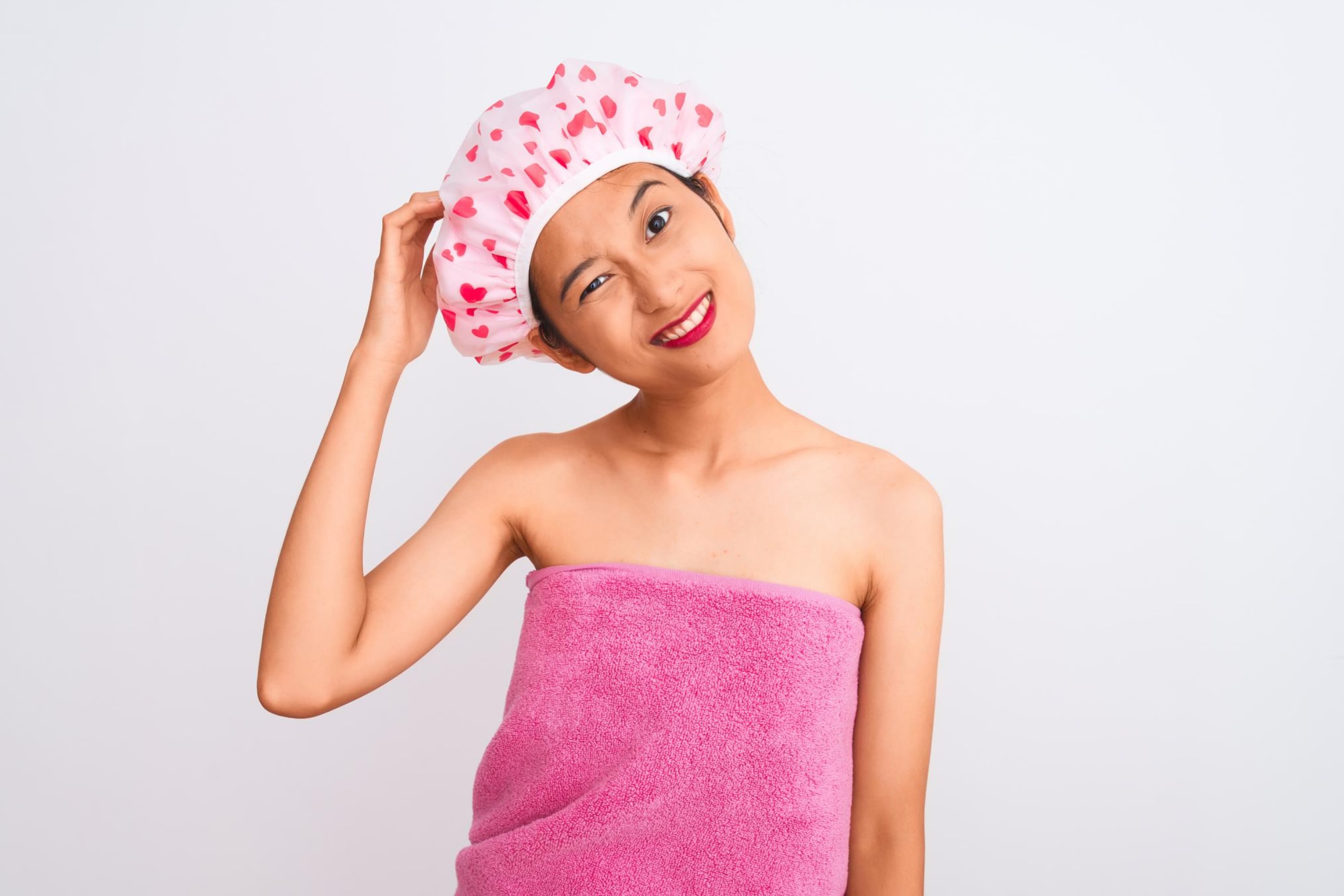
[wp-faq-schema title=”Frequently Asked Questions”]

I used my satin bonnet after air drying for an hour. I woke up to my hair still wet. So no it doesn’t always work.
Some methods may not always work, indeed. In this case, you just need to find the one that works for you.
Should I wet my hair before styling? I heard some people saying that wet hair is styled better and easier. Is it true?
Well, you don’t have to let your hair completely dry before putting it in a bonnet, of course, but I’d say that styling wet hair may not turn out the way you want. From my own experience, it’s best to let your hair dry completely before you style it. You can use a hairdryer on low heat or let your hair air dry before styling it, it’s up to you.
I want to try a bonnet since my hair is always wildly tangled in the morning, but I don’t know how to put it on correctly. See, my hair is rather long, it covers my butt, so how to put on a bonnet with such long hair?
I guess you could try to wrap your hair around your head and then put on a bonnet. I don’t know whether fixing your hair is needed (e.g. with the hair pins, etc.). I also have long hair and for me, sleeping with the braid is the best option ever! Maybe, it makes sense for you to try it as well?